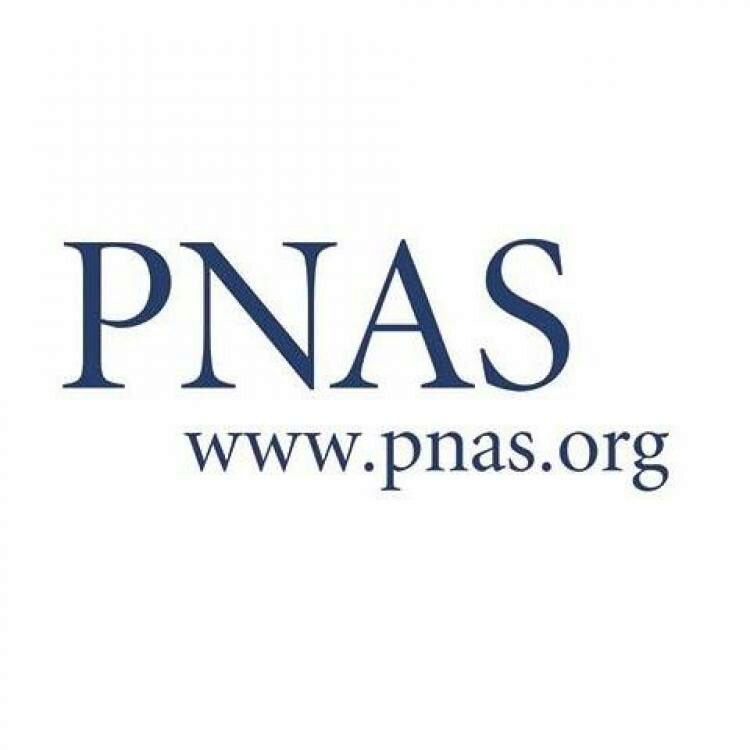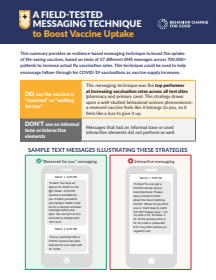
A Megastudy of Text-Based Nudges Encouraging Patients to Get Vaccinated at an Upcoming Doctor’s Appointment
Abstract
Many Americans fail to get life-saving vaccines each year, and the availability of a vaccine for COVID-19 makes the challenge of encouraging vaccination more urgent than ever. We present a large field experiment (N = 47,306) testing 19 nudges delivered to patients via text message and designed to boost adoption of the influenza vaccine. Our findings suggest that text messages sent prior to a primary care visit can boost vaccination rates by an average of 5%. Overall, interventions performed better when they were 1) framed as reminders to get flu shots that were already reserved for the patient and 2) congruent with the sort of communications patients expected to receive from their healthcare provider (i.e., not surprising, casual, or interactive). The best-performing intervention in our study reminded patients twice to get their flu shot at their upcoming doctor’s appointment and indicated it was reserved for them. This successful script could be used as a template for campaigns to encourage the adoption of life-saving vaccines, including against COVID-19.

A 680,000-person Megastudy of Nudges to Encourage Vaccination in Pharmacies
Abstract
Encouraging vaccination is a pressing policy problem. To assess whether text-based reminders can encourage pharmacy vaccination and what kinds of messages work best, we conducted a megastudy. We randomly assigned 689,693 Walmart pharmacy patients to receive one of 22 different text reminders using a variety of different behavioral science principles to nudge flu vaccination or to a business-as-usual control condition that received no messages. We found that the reminder texts that we tested increased pharmacy vaccination rates by an average of 2.0 percentage points, or 6.8%, over a 3-mo follow-up period. The most-effective messages reminded patients that a flu shot was waiting for them and delivered reminders on multiple days. The top-performing intervention included two texts delivered 3 d apart and communicated to patients that a vaccine was “waiting for you.” Neither experts nor lay people anticipated that this would be the best-performing treatment, underscoring the value of simultaneously testing many different nudges in a highly powered megastudy.

An Experiment Evaluating the Impact of Large-Scale, High-Payoff Vaccine Regret Lotteries
Abstract
We present a pre-registered experiment testing the effects of three, high-payoff (up to $50,000) vaccine regret lotteries in Philadelphia. In each drawing, residents of a randomly selected “treatment” zip code received half of the 12 lottery prizes (boosting their chances to 59-98x those of their neighbors). Our quasi-experimental results yield mixed estimates of the benefits of these lotteries for Philadelphia’s overall vaccination rate. Our experimental results, however, offer a causal estimate of the limited return on even high-odds vaccine lotteries. Difference-in-difference regressions estimate the first treated zip code experienced an insignificant 11% jump in vaccinations compared to control zip codes. Pooling results from all three, we do not detect significant benefits from treatment, and our 95% confidence interval bounds the benefits at 9%.

BCFG Vaccination Toolkit
A Field-Tested Messaging Technique to Boost Vaccine Uptake
This summary provides an evidence-based messaging technique to boost the uptake of life-saving vaccines, based on tests of 37 different SMS messages across 700,000+ patients to increase actual flu vaccination rates. This technique could be used to help encourage follow-through for COVID-19 vaccinations as vaccine supply increases.

